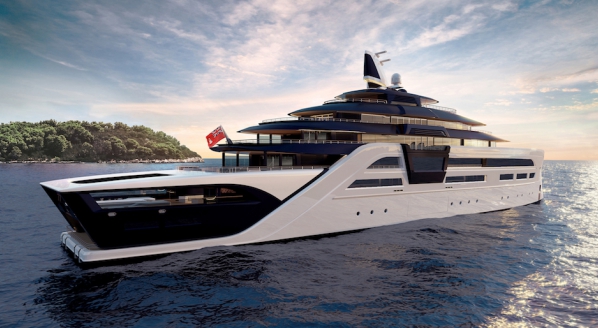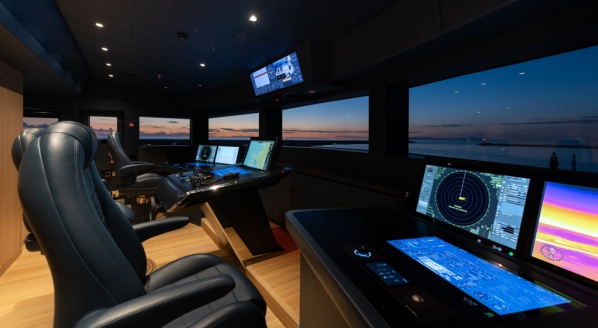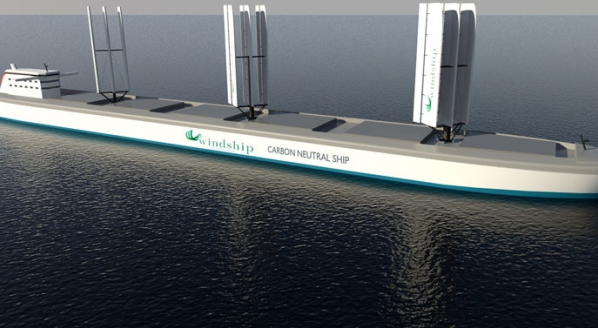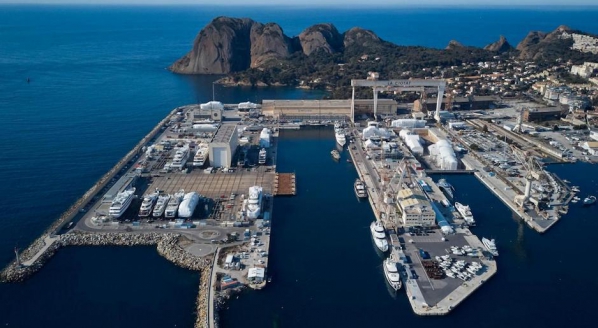The Water Revolution column
For Bill Tripp, innovation can be found across every inch of a vessel…
As a naval architect and designer, I have the necessity to react to a client’s wishes, but also the means to lead decisions. Greatly improving our sustainability credentials has become a key part of our future success, as many of our clients want a light footprint. The means for significant improvement already exist and disruptive change is coming.
Drag reduction
I am a strong proponent of reducing drag to significantly lower fuel consumption. A well-designed hull shape of a large yacht can save a gigawatt of power in comparison to one of equal displacement and gross tonnage that is inefficiently designed.
Reducing the gap between what energy is needed and what is available is key to the successful use of alternative energy propulsion systems.
Hybrids
Innovation can come from smaller boats, where design and build cycles are quicker. We are currently building a 45ft sailboat with a DC pancake generator that turns the normal diesel into a parallel hybrid system. The batteries can be charged either by plugging in at the slip, hydro-generating while sailing or via the pancake generator. Without running the engine, the boat will be able to use all its sailing and cruising amenities and either hydro-generate or plug back in at the end of the weekend, while maintaining a conventional powering range for flat calms on long trips. The cockpit bimini will be made from solar cloth and charge the batteries from flat in a day. All these innovations are significant and scalable to larger yachts.
Similar hybrid systems can work on motoryachts to charge batteries and run systems via the use of excess diesel engine capacity when the engine is underloaded.
Current battery energy density is at best one hundreth of diesel, which leads to volume and weight problems. Graphene-lithium batteries are on their way, and scientists predict that they will be 50 per cent more powerful (energy density) at half the weight (specific density). Twice the power for the volume and four times the power for the weight. This development will give yachts a longer range under all-electric power and/or cover a more significant portion of the house load.
Materials
We recently completed a study on the carbon emissions impact of material choices on a 75m displacement superyacht. The results surprised us. The lighter aluminium yacht would need to travel 500,000nm to compensate for the increased amount of carbon released producing an aluminum vs. steel hull (estimated at 330t of CO). However, if the aluminium comes from a plant fired by hydropower instead of coal, then an aluminum hull is 40t of CO2 greener than steel and 300t greener over 500,000nm. Looking at the entire lifecycle is therefore crucial to finding sustainable solutions.
Our industry needs to use more recyclable and sustainable materials. Tripp Design is leading a project to roto-mould sailing dinghies out of a bio plastic. This plastic is cellulose-based and biodegradable. Similar bio resins are being made, and when combined with natural fibre reinforcements on future projects 0 we see many uses for such materials both in the interior and exterior of yachts.
Bottom paint
One of our clients, Aquijo, an 86m sailing yacht which has just gone around the world, is undergoing her five-year refit and applying a new kind of bottom paint. It is a non-toxic paint that goes on with such a high level of gloss that no growth can stick, and what little does cling when docked for longer periods will come off completely when the boat hits 10 knots. This is revolutionary and means that we are not spraying toxins onto the bottom, the slipways or into the air, and, most importantly, we are not exposing pristine environments to dissolving toxins. This paint has a much longer lifespan and while advantageous economically, the true win is that we are no longer poisoning the sea.
Disruptive changes
Foiling was common in the ’60s on ferry boats, only to be replaced, eventually, by non-foiling catamarans. Its resurgence has started in small sailing boats and is slowly shifting to smaller power boats and dramatically dropping the power required. Superyachts are starting to benefit from semi-foiling technology and less drag means less carbon footprint.
Hydrogen is still over the horizon for most yachts, but it will become a reality. The energy density is attractive, the safe storage is being addressed and the byproduct is water. It can be used to power engines or stored as fuel cells. Aircraft (and airports) may be first to widely adapt, and when they do, the attention and scale will bring fantastic change.
Summary
We need to push for innovation and embrace what is already available, Water Revolution’s Database of Sustainable Solutions is aimed to facilitate exactly that. After all, we are bound to a world that is singular in its beauty and lifegiving resources. We are 150 years into a society that has learned to tame nature and started to change it. With change comes responsibility – we flaunt nature’s rules at our peril. For the long-term health of our industry and planet, we must innovate and reduce the impact that running a yacht has on our environment. When building boats, we can adapt technology to many ends, and one of those ends must be to exist more in harmony with the oceans and our atmosphere, for it is exactly in this intersection where boats live.
Profile links
NEW: Sign up for SuperyachtNewsweek!
Get the latest weekly news, in-depth reports, intelligence, and strategic insights, delivered directly from The Superyacht Group's editors and market analysts.
Stay at the forefront of the superyacht industry with SuperyachtNewsweek
Click here to become part of The Superyacht Group community, and join us in our mission to make this industry accessible to all, and prosperous for the long-term. We are offering access to the superyacht industry’s most comprehensive and longstanding archive of business-critical information, as well as a comprehensive, real-time superyacht fleet database, for just £10 per month, because we are One Industry with One Mission. Sign up here.
Related news

Diplomatic-grade security and privacy
With owners wanting to spend extended periods on board, security infrastructure must enable protected business
Owner

Innovation and changing perspectives
‘How do we give our clients a different lens to look through?’, asks Lateral Naval Architects MD James Roy
Design

A bridge between innovative technology and the sea
TEAM Italia celebrates its 20-year anniversary
Technology

Wind-assisted propulsion systems
Martin Richter, Ship Type Expert Yachts at DNV GL, highlights the opportunity that an infinite resource presents
Design

A new reality
Has the new reality we are living in changed the superyacht industry’s attitude towards virtual reality?
Technology

Taboo or not taboo
While not wanting to tempt fate, for Rob Papworth of MB92 La Ciotat, there is a burning issue that requires discussion
Technology
Related news
Diplomatic-grade security and privacy
5 years ago
Innovation and changing perspectives
5 years ago
Wind-assisted propulsion systems
5 years ago
A new reality
5 years ago
Taboo or not taboo
5 years ago
NEW: Sign up for
SuperyachtNewsweek!
Get the latest weekly news, in-depth reports, intelligence, and strategic insights, delivered directly from The Superyacht Group's editors and market analysts.
Stay at the forefront of the superyacht industry with SuperyachtNewsweek



